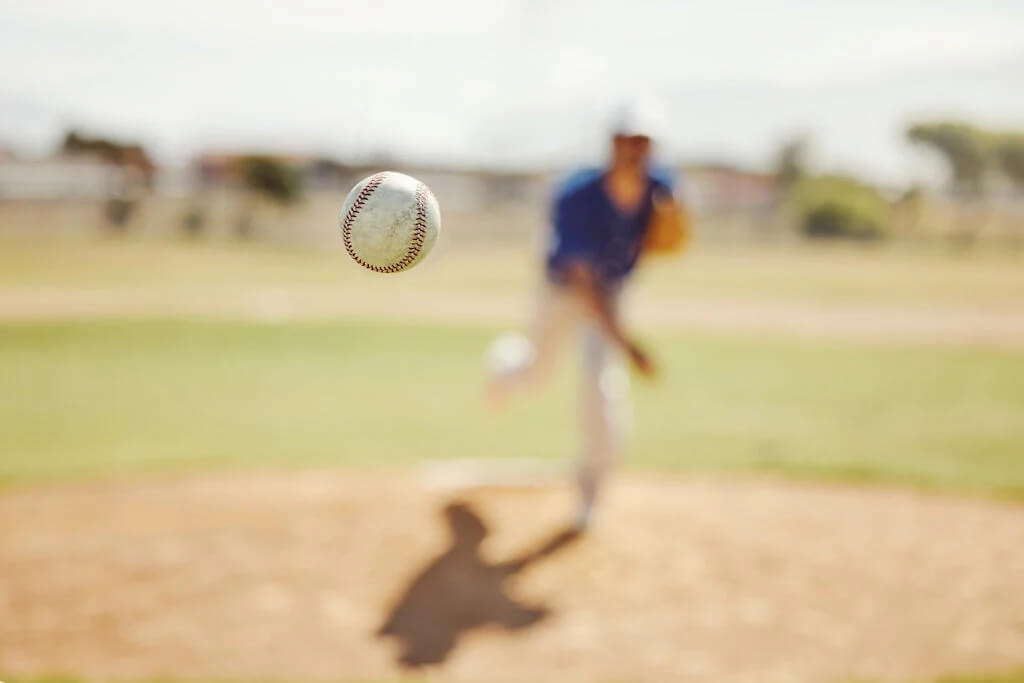Eastern Conference
Atlantic Division
Central Division
Southeast Division
Western Conference
Northwest Division
Southwest Division
AFC
NFC
American League
National League
Why Are There So Few Knuckleball Pitchers?

The knuckleball has been a part of baseball since the early 20th century. Its origins are murky, with several pitchers like Nap Rucker, Lew Moren, Ed Cicotte, and Ed Summers often credited with inventing the pitch. The knuckleball's unique grip and release prevent the ball from spinning, creating an unpredictable trajectory that confounds both batters and catchers. Despite its long history, mastering the knuckleball remains elusive for many, contributing significantly to its rarity.
Difficulty in Mastering the Knuckleball
The knuckleball is challenging to master. It requires a specific grip and a precise release that minimizes the ball's spin. This lack of spin results in erratic movement, making the pitch difficult to control. Many pitchers spend years in a trial-and-error process to develop the knuckleball. For instance, Mickey Jannis learned the pitch on his own, realizing that his fastball wouldn't take him to the majors. The prolonged and often discouraging learning curve adds to the scarcity of knuckleballers.
Lack of Mentorship and Resources
One of the significant drawbacks to the knuckleball is the scarcity of experienced teachers. Phil Niekro, a legendary knuckleballer, once posed, "Who is going to teach it?" This scarcity of knowledgeable instructors creates a significant barrier to entry for aspiring knuckleball pitchers. The limited availability of resources and mentors makes it challenging for new pitchers to learn and refine the knuckleball, further contributing to its decline.
Teams' reluctance to dedicate resources and time to developing a knuckleballer is also a factor. The modern baseball landscape emphasizes quick results and advanced pitch design, often leaving little room for the long development time the knuckleball requires. This environment is not conducive to nurturing the pitch, making it harder for knuckleballers to emerge and succeed.
Catching and Handling the Knuckleball
The unpredictable movement of the knuckleball poses significant challenges for catchers. Specialized catchers and mitts are often required, which can lead to a higher number of passed balls. For example, the 1945 Washington Senators had catchers who combined for 40 passed balls, illustrating the difficulty of handling the knuckleball. This necessity for specialized catchers can deter teams from considering a knuckleball pitcher, further contributing to its rarity.
Modern Era Challenges and Recent Resurgence
The contemporary baseball culture favors high-velocity pitches, making the slower knuckleball less appealing to scouts and coaches. Analytical approaches in the modern era emphasize control, strikeout rates, and predictability—qualities the knuckleball often lacks. This bias towards faster pitches and predictable results discounts the potential value of a well-executed knuckleball.
Despite these challenges, interest in the knuckleball has seen a recent resurgence. Matt Waldron of the San Diego Padres has been influential in reviving the pitch, throwing 525 knuckleballs in the 2024 season alone. This renewed interest has brought the knuckleball back into the spotlight, although it remains in niche use.
Career Longevity and Notable Knuckleballers
One of the unique aspects of the knuckleball is that it places less strain on a pitcher's arm, often leading to longer careers. Hoyt Wilhelm pitched until he was nearly 50, Phil Niekro until 48, and Tim Wakefield retired at 45. The longevity offered by the knuckleball is a notable benefit, yet it does not make up for the pitch's learning and control difficulties.
Famous knuckleballers such as Tom Candiotti, R.A. Dickey, Charlie Hough, Phil Niekro, Joe Niekro, Tim Wakefield, and Hoyt Wilhelm have all left significant marks on the game. More recent practitioners like Steven Wright and Mickey Jannis continue to keep the pitch alive. These pitchers form a close-knit community, often supporting each other due to the unique challenges they face. For instance, the San Diego Padres facilitated Zoom sessions between Matt Waldron and Tim Wakefield and provided R.A. Dickey's contact information, showcasing this camaraderie.

Unpredictability and Mechanics
The knuckleball's unpredictability makes it difficult to hit and challenging for catchers to handle. Thrown with minimal spin at speeds between 55-70 mph, the knuckleball's motion is influenced by the uneven placement of stitches in the airflow, causing erratic breaks. This unpredictability is both a strength and a weakness, making it a formidable yet inconsistent weapon.
Statistics on Knuckleball Usage and Current State
From 2019 to 2023, only 501 knuckleballs were thrown across the league, mostly by non-pitchers. However, in 2024, Matt Waldron's performance significantly increased the number of knuckleballs thrown. This statistical uptick indicates a lingering interest, though the pitch remains rare. The 1945 Washington Senators had a starting pitching staff that almost exclusively used the knuckleball, finishing 1.5 games out of first place. This season exemplified the pitch's effectiveness and challenges.
Current State of Knuckleball Pitching and Opportunities for Bettors
The rarity and unpredictability of knuckleball pitchers make them an intriguing subject for baseball enthusiasts and bettors alike. While sports betting bonuses offered by various platforms provide incentives for new and seasoned bettors, understanding niche elements like knuckleball pitching can add another layer of strategy. As pitchers like Matt Waldron bring renewed attention to this rare pitch, bettors might look for games featuring knuckleballers to find unique betting angles or opportunities to use these bonuses effectively.
Cultural and Historical Significance
The knuckleball holds a special place in baseball history and culture. The peak of knuckleball usage came in the 1970 season, with seven major league practitioners combined for 47 wins and 44 saves. This period represented the highest concentration of knuckleball pitchers, highlighting a time when the pitch was more common. International interest in the knuckleball is also notable, with pitchers like Japanese knuckleballer Eri Yoshida training with Tim Wakefield and achieving success abroad.
The decline of the knuckleball reflects broader changes in baseball strategy and culture. Emphasis on velocity, control, and advanced analytics has overshadowed the knuckleball's potential, making it a rare and specialized pitch in today's game.












